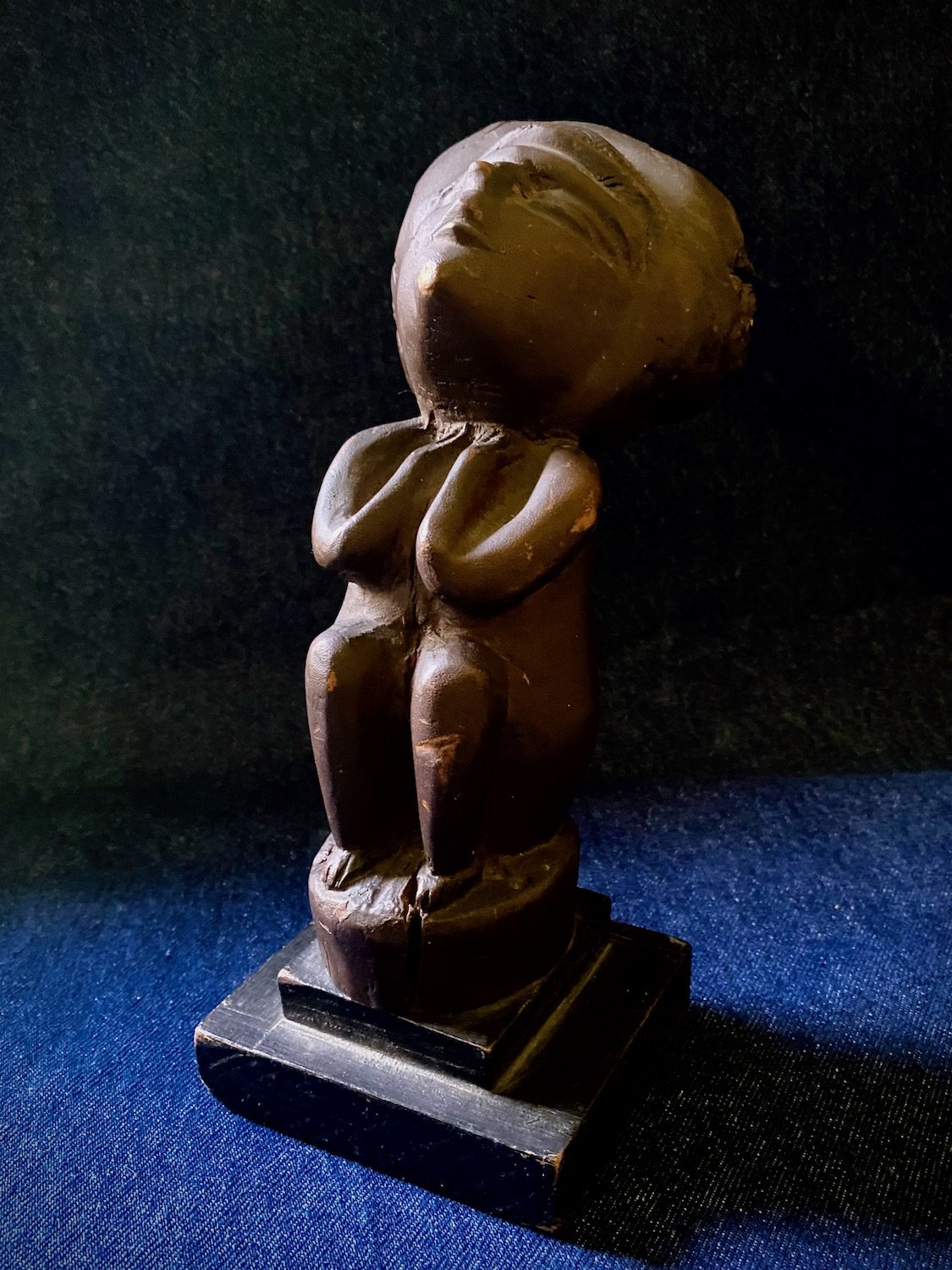 Image 1 of 5
Image 1 of 5

 Image 2 of 5
Image 2 of 5

 Image 3 of 5
Image 3 of 5

 Image 4 of 5
Image 4 of 5

 Image 5 of 5
Image 5 of 5






Ecstatic Mexican Mistletoe Figure
Mistletoe? That’s right. This charming carving represents a tradition of Mexican wood carving which utilizes spectacular natural wood burls, sometimes called “wood roses”. These burls, which can look like flowers (or mushrooms, or waves) are actually the attachment imprint of a tropical mistletoe “root” (haustorium), left behind on the host tree after the parasite has decayed and fallen away. They are typically carved into birds or other forms, taking advantage of the wood’s natural sculptural form to artistic affect.
In this unusual anthropomorphic example, the artist has utilized the wood rose to imply an expansion or consciousness, as if the subject is having an ecstatic or hallucinatory experience. She certainly looks happy enough! We’ll have what she’s having.
Rich crackly patina with some rubbing. Probably early-to-mid 20th century. 9” x 6” x 4”
Mistletoe? That’s right. This charming carving represents a tradition of Mexican wood carving which utilizes spectacular natural wood burls, sometimes called “wood roses”. These burls, which can look like flowers (or mushrooms, or waves) are actually the attachment imprint of a tropical mistletoe “root” (haustorium), left behind on the host tree after the parasite has decayed and fallen away. They are typically carved into birds or other forms, taking advantage of the wood’s natural sculptural form to artistic affect.
In this unusual anthropomorphic example, the artist has utilized the wood rose to imply an expansion or consciousness, as if the subject is having an ecstatic or hallucinatory experience. She certainly looks happy enough! We’ll have what she’s having.
Rich crackly patina with some rubbing. Probably early-to-mid 20th century. 9” x 6” x 4”